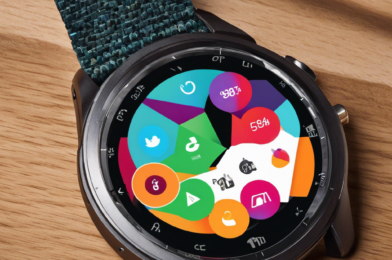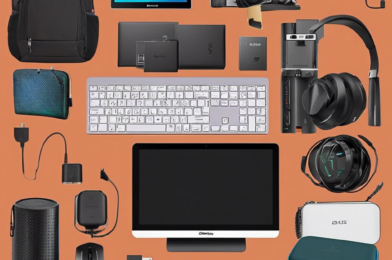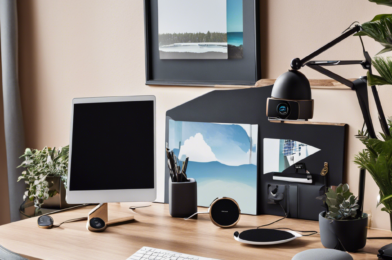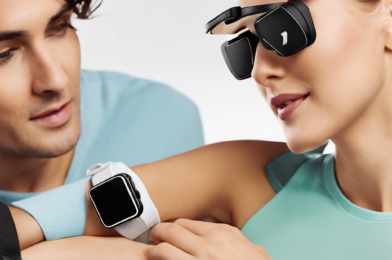Choosing a smartphone that suits your needs and preferences can be a daunting task, with the market flooded by a plethora of options featuring various specifications and price points. To ensure you make an informed decision, this comprehensive guide will navigate you through the essential factors to consider when selecting your ideal smartphone.
Firstly, let’s discuss your budget. Smartphones vary significantly in price, from affordable options starting around $100 to premium flagships exceeding $1000. Determine a comfortable budget range, as this will narrow down your choices and guide your decision-making process. Remember, a higher price doesn’t always equate to better value; some affordable phones offer excellent specifications.
Next, consider the size and display of the phone. Do you prefer a compact device that easily fits in your pocket, or a larger screen ideal for multimedia consumption and gaming? Today’s smartphones typically range from 5.5 inches to over 6.5 inches in display size. Also, pay attention to the display quality, as higher resolution and newer display technologies like OLED or Super AMOLED offer richer colors, deeper blacks, and improved power efficiency.
Performance is another critical factor. The processor, or CPU, impacts the overall speed and responsiveness of your phone. If you intend to use your device for demanding tasks like gaming, video editing, or multitasking, opt for a phone with a powerful processor and ample RAM (typically 6GB or higher). This ensures smooth performance and efficient handling of intensive tasks.
Camera quality has become a significant differentiator among smartphones. If capturing memories or creating content is important to you, look for a phone with a high-resolution camera, preferably with larger image sensors and wider apertures to capture more light, resulting in brighter and more detailed photos and videos. Also, consider additional camera features like optical image stabilization, portrait mode, and ultra-wide lenses for enhanced photography.
Battery life is also crucial. Aim for a phone with a capacity suited to your usage patterns. If you’re a heavy user, look for higher milliamperage (mAh) ratings, as this indicates a larger battery capacity and longer endurance. Fast charging and wireless charging support are also convenient features to have.
Finally, consider the software and special features. Different smartphone brands offer unique interfaces and exclusive software features. Some provide a stock Android experience, while others have custom interfaces with additional functionalities. Consider the overall user experience, ease of use, and the availability of useful features like gesture controls, always-on displays, or AI-powered assistants.
Now, let’s delve into each of these aspects in more detail to ensure you cover all bases when making your choice.
The design and build quality of your smartphone are essential factors that impact not just the aesthetics but also the durability and usability of the device. When considering the design, think about the materials used, the overall ergonomics, and the placement of buttons and ports. Does the phone feel comfortable in your hand? Is it too slippery, or does it provide a secure grip? These are essential questions to ask yourself, as you want a phone that not only looks good but also feels comfortable during extended use.
Additionally, pay attention to the durability and resilience of the device. Look for phones that have robust build quality, with some offering water resistance or dust resistance, which can provide peace of mind, especially if you lead an active lifestyle or tend to use your phone in various environments. A well-built phone will also have sturdy buttons and a solid frame that can withstand everyday wear and tear without showing signs of damage or malfunction.
Another design aspect to consider is the presence of a headphone jack and the type of charging port. Some modern smartphones have done away with the traditional 3.5mm headphone jack, opting for a sole USB-C port or Lightning connector for both charging and audio. If you have a preference for wired headphones or own a collection of wired audio gear, the presence of a headphone jack may be crucial. However, many newer phones rely entirely on wireless connectivity for audio, utilizing Bluetooth or other wireless standards, so consider your personal preferences and existing audio equipment when making your choice.
When it comes to smartphone displays, the quality and features can greatly enhance your overall user experience. As mentioned earlier, the size of the display is an essential factor to consider. Larger screens, often referred to as phablets, offer expanded viewing areas perfect for watching videos, playing games, or reading. On the other hand, more compact screens provide a more manageable device that comfortably fits in your pocket or purse. It’s worth noting that a bigger screen doesn’t necessarily mean a better display, as pixel density and resolution play a more significant role in picture quality.
Opt for a smartphone with a high-resolution display, as this results in sharper text and images. Modern flagships often feature Quad HD or even 4K resolutions, ensuring incredibly detailed visuals. Additionally, look for displays with higher refresh rates, typically 90Hz or 120Hz, as they provide smoother animations and better responsiveness, especially for gaming or scrolling through content. A higher refresh rate also makes the phone feel more fluid and responsive in day-to-day usage.
The display technology used is also crucial. OLED or organic light-emitting diode displays offer deeper blacks, higher contrast ratios, and more vibrant colors than traditional LCD screens. This is because OLED screens can turn off individual pixels, resulting in perfect blacks and improved power efficiency. Some premium smartphones even feature LTPO OLED screens, dynamically adjusting the refresh rate to conserve battery power, thus providing a more power-efficient display.
When it comes to performance, the processor, or CPU (Central Processing Unit), is the brain of your smartphone, impacting its speed, responsiveness, and multitasking capabilities. There are various smartphone processors available, with some models featuring custom-designed chips. The key is to look for a processor that offers a balance of performance and power efficiency, ensuring your phone can handle demanding tasks without draining the battery too quickly.
Accompanying the processor is the GPU (Graphics Processing Unit), which handles graphics-intensive tasks like gaming or video editing. A powerful GPU will ensure smooth and lag-free performance in games and creative apps. Similarly, the amount of RAM (Random Access Memory) impacts the number of apps your phone can handle running simultaneously without slowing down. Ideally, opt for a phone with at least 4GB of RAM for basic multitasking and 6GB or higher for more intensive usage.
Internal storage is another critical specification to consider. This determines how many apps, photos, videos, and other files you can store on your device. Look for a phone with at least 64GB of internal storage, although 128GB or 256GB is ideal if you plan to install many apps or shoot high-resolution videos. Some smartphones also offer expandable storage via microSD cards, giving you the flexibility to add more storage as needed.
The camera has become one of the most critical features in a smartphone, often being the deciding factor for many buyers. When considering the camera, pay attention to the resolution, lens setup, and additional camera features. A higher megapixel count generally results in sharper and more detailed images, especially when printing or cropping photos. However, larger image sensors and wider apertures that let in more light also contribute to improved low-light performance and overall image quality.
Modern smartphones often feature multiple rear cameras, providing different focal lengths and improved photography capabilities. For instance, an ultra-wide lens lets you capture more expansive scenes, a telephoto lens offers optical zoom for distant subjects, and a depth sensor enhances portrait mode photos with precise background blurring. Additionally, look for camera features like optical image stabilization to reduce blur in low-light conditions, and AI-powered photography modes that automatically adjust settings for the best results.
Selfie cameras have also seen significant improvements, with some phones offering high-resolution front-facing cameras and additional depth sensors for better portrait selfies. Consider your usage patterns and whether you regularly take selfies or make video calls, as a higher-quality front-facing camera may be a crucial factor in your decision.
In conclusion, choosing the perfect smartphone involves considering your budget, performance requirements, camera needs, and specific features that enhance your overall mobile experience. By carefully evaluating the factors outlined in this guide, you can make an informed decision that suits your unique needs and ensures you get the best value for your money. Remember to weigh the specifications, read reviews, and, if possible, experience the phone in person to determine which device will be your faithful companion for the next few years. Happy hunting for your dream smartphone!








